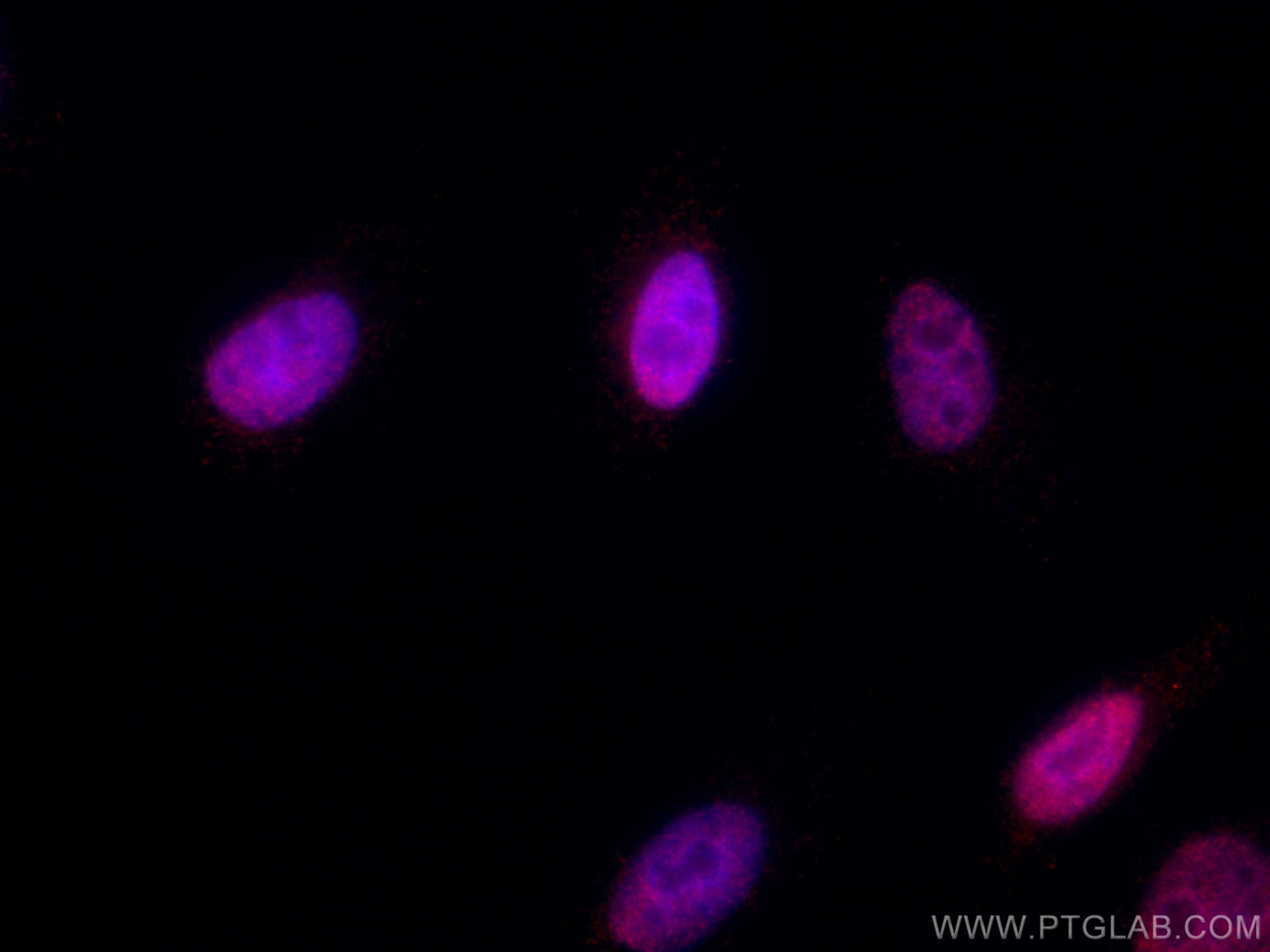Validation Data Gallery
Filter:
Tested Applications
| Positive IF/ICC detected in | HepG2 cells |
Recommended dilution
| Application | Dilution |
|---|---|
| Immunofluorescence (IF)/ICC | IF/ICC : 1:50-1:500 |
| It is recommended that this reagent should be titrated in each testing system to obtain optimal results. | |
| Sample-dependent, Check data in validation data gallery. | |
Product Information
CL594-67335 targets RCC1 in IF/ICC applications and shows reactivity with Human samples.
| Tested Reactivity | Human |
| Host / Isotype | Mouse / IgG1 |
| Class | Monoclonal |
| Type | Antibody |
| Immunogen | RCC1 fusion protein Ag17809 相同性解析による交差性が予測される生物種 |
| Full Name | regulator of chromosome condensation 1 |
| Calculated molecular weight | 421 aa, 45 kDa |
| Observed molecular weight | 50 kDa |
| GenBank accession number | BC010067 |
| Gene Symbol | RCC1 |
| Gene ID (NCBI) | 1104 |
| RRID | AB_2920115 |
| Conjugate | CoraLite®594 Fluorescent Dye |
| Excitation/Emission maxima wavelengths | 588 nm / 604 nm |
| Form | Liquid |
| Purification Method | Protein G purification |
| UNIPROT ID | P18754 |
| Storage Buffer | PBS with 50% glycerol, 0.05% Proclin300, 0.5% BSA , pH 7.3 |
| Storage Conditions | Store at -20°C. Avoid exposure to light. Stable for one year after shipment. Aliquoting is unnecessary for -20oC storage. |
Background Information
CHC1, also named as RCC1, promotes the exchange of ran-bound gdp by gtp. It is involved in the regulation of onset of chromosome condensation in the S-phase. Phosphorylation of RCC1 on serines located in or near its nuclear localization signal activates RCC1 to generate RanGTP on mitotic chromosomes, which is required for spindle assembly and chromosome segregation.
Protocols
| Product Specific Protocols | |
|---|---|
| IF protocol for CL594 RCC1 antibody CL594-67335 | Download protocol |
| Standard Protocols | |
|---|---|
| Click here to view our Standard Protocols |
